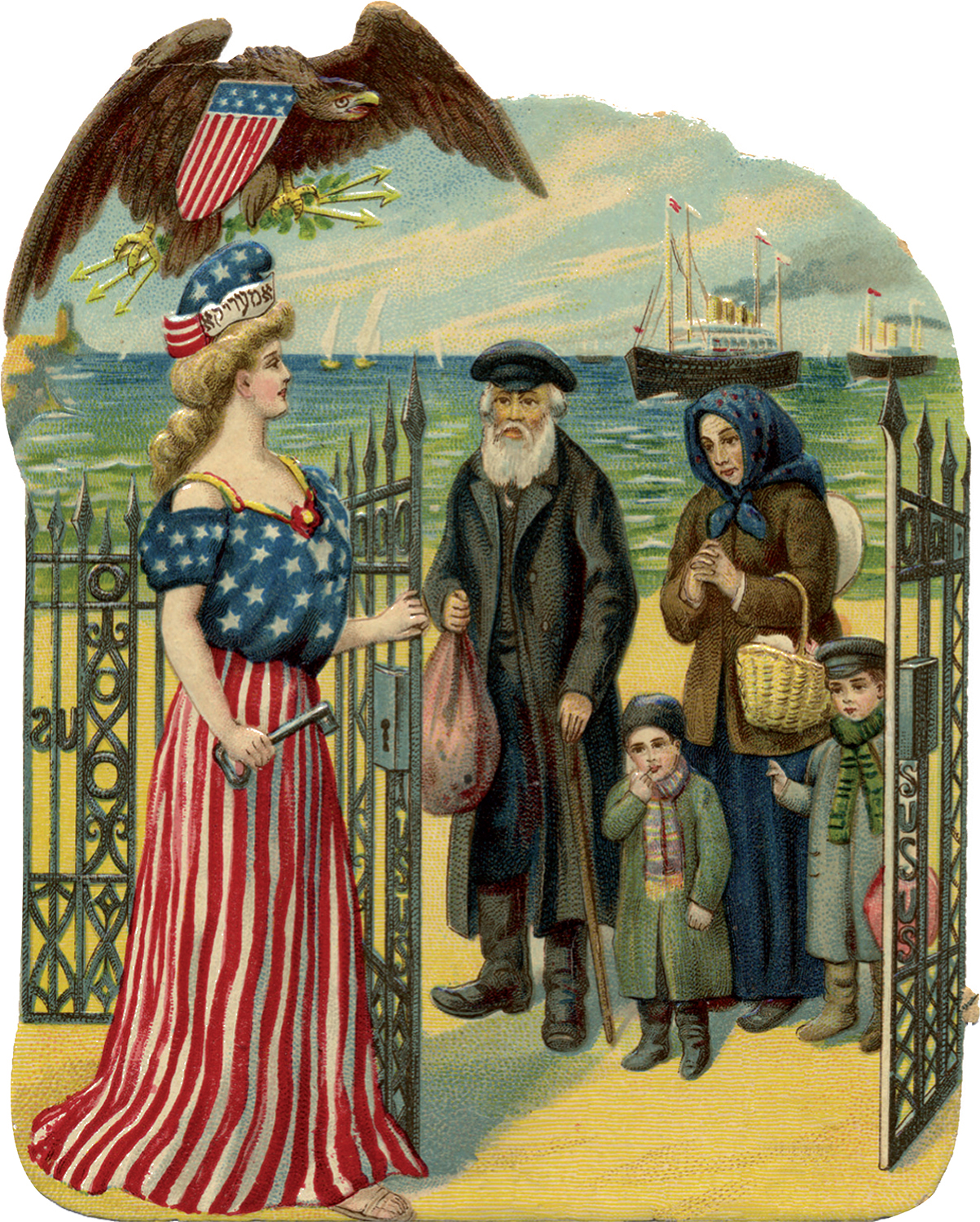The American Promise:
Printed Page 528
SEEKING THE AMERICAN PROMISE
Seeking Refuge: Russian Jews Escape the Pogroms

Fifteen-
Violent pogroms—
Bands of Russians swarmed through the Jewish quarters, breaking down doors and smashing windows, looting or destroying all the furnishings. They ripped to shreds feather beds and feather pillows, sending the white down into the breeze until it settled like snow over the scenes of violence and mayhem. No one knows precisely how many Jews died at the hands of the mob, but estimates range as high as five hundred. “The building we lived in and the place we worked in were assaulted at the same time,” Bisno recalled. “Mother ran for her life while we struggled for ours; we were all separated by the mob—
These and subsequent pogroms and persecutions prompted a great wave of Jewish migration. Between 1880 and 1914, more than 2.7 million Jews sought refuge from religious persecution, the vast majority of them heading to the United States. Among the first to emigrate were Abraham Bisno and his family. When the Bisnos learned that Jewish groups in Europe and America had raised money to help Russian Jews emigrate, they scraped together forty rubles to get from Kiev to Brody in Galicia, where the refugees gathered. “Our family sold a sewing machine and whatever clothing could be spared—
The trip was long and arduous, particularly the ocean voyage. Crowded in steerage, immigrants suffered seasickness during the crossing, which took two to three weeks by steamer. Once in the United States, the Bisno family was sent on to Atlanta by an American committee formed to help the immigrants. The men quickly found work as tailors. Bisno struck out on his own, moving to Chattanooga, where he apprenticed to an English-
The slums of the nation’s big cities, where many of the Jewish immigrants ended up, were far from a “promised land.” The Bisnos lived in a dilapidated shack above a stable with a yard “full of rags, junk, rats, and vermin.” Other Jewish immigrants voiced their disappointment at the conditions they encountered in the United States. “The dirt, the noise, the confusion, the swarming hurrying crowds!” Goldie Stone exclaimed. “My heart sank. This was all so different from what I had expected or dreamed.”
Bad as conditions were, the immigrant Jews appreciated the safe haven the United States afforded. And although the sweatshops where Bisno and other Jewish immigrants labored were dark and bleak, for most Jews the slums proved a temporary prison. The United States provided not only a refuge but also a chance to start over and prosper. Bisno watched as many of his friends and relatives, after saving or borrowing a little money, opened small businesses of their own. “All had to begin in a very small way,” he recalled. “With a hundred or two hundred dollars they were able to start grocery stores, markets, cigar stores.” Bisno quickly moved up in his trade, becoming a contractor in a sweatshop by the time he reached the age of sixteen. But then his life took a different course. Moved by the Haymarket martyrs, he converted to socialism in 1886, joined the Knights of Labor, and went on to become a labor organizer. The first president of the Chicago Cloak Makers’ Union, he worked to improve the lot of garment workers until his death in 1929.
Questions for Consideration
- Compare the Jewish immigrants from Russia with other immigrant groups discussed in this chapter. What attracted each group to America? What were their expectations? How did each group fare?
- What aspects of Bisno’s life in America led him to join the labor movement? How may his childhood in Russia have influenced him in this direction?
Connect to the Big Idea
What developments in technology and industry encouraged global immigration during the Gilded Age?